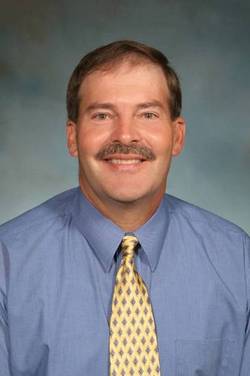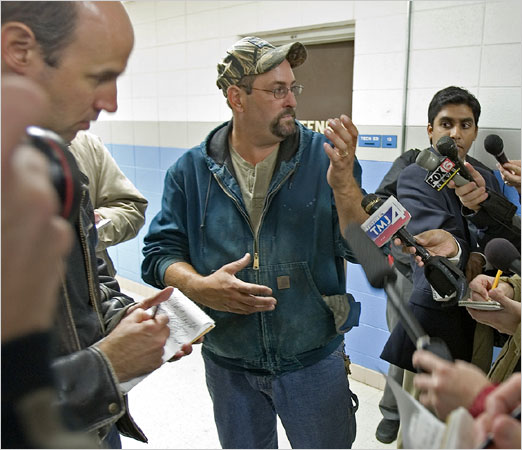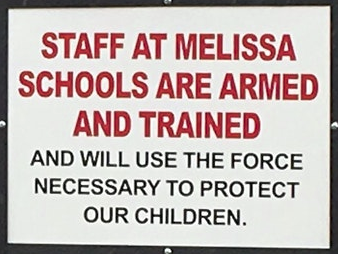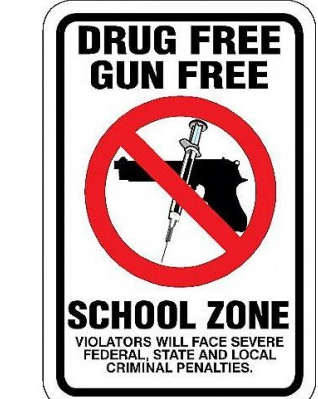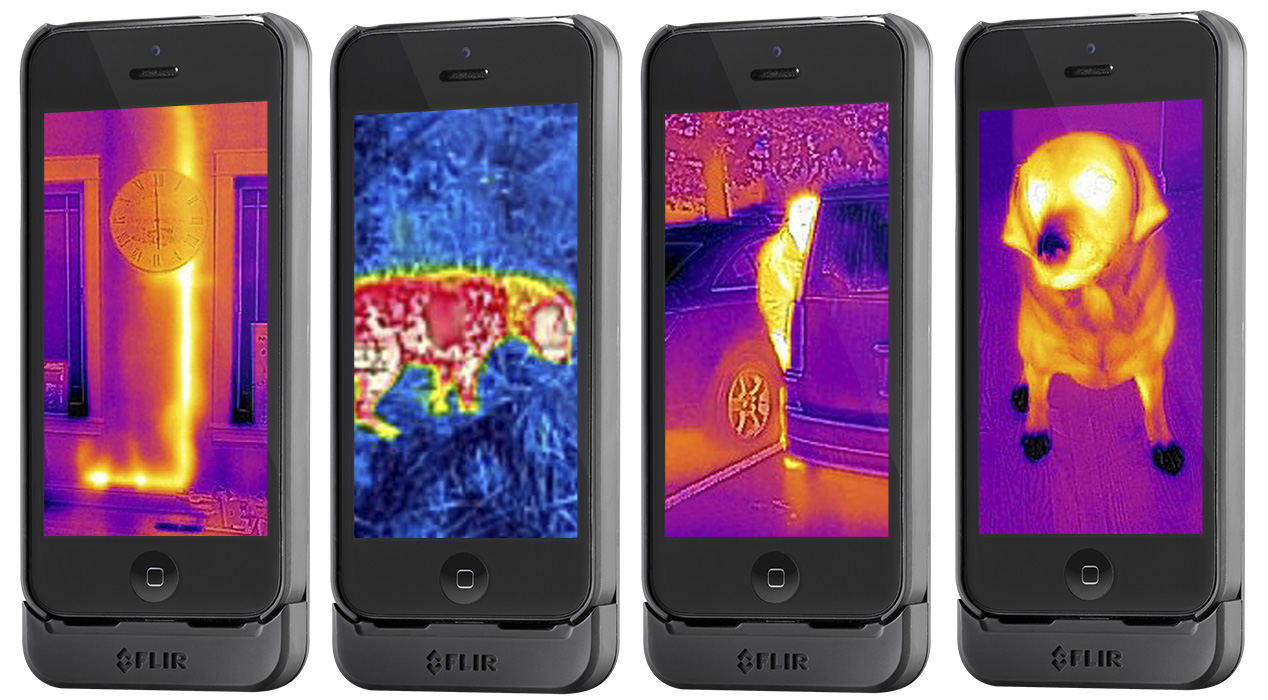(A special report by volunteers of The Open Records Project)
June 2018

PREVIOUS SCHOOL MASS SHOOTINGS
PREVIOUS SCHOOL MASS SHOOTINGS For purposes of this study we've defined a mass shooting as five or more injuries or fatalities in a single event. In recent years there have been from zero to ten events with one or two fatalities, often related to criminal activity or domestic trouble. Those events were not analyzed. UT TOWER - 1966 Modern school mass shooter incidents date from the 1966 University of Texas Tower shooting that killed 17 and wounded 31. The probably insane gunman, Charles Whitman, was killed at the top of the UT Tower by an Austin police officer assisted by an armed civilian. CLEVELAND ELEMENTARY - 1989 In years following the UT shooting there were from from zero to nine fatalities a year but no mass shootings. In 1989 a mentally unbalanced criminal killed 6 and wounded 32 at a Stockton, California elementary school. He then committed suicide. WESTSIDE MIDDLE SCHOOL - March 1998 In March of 1998 a thirteen year old boy and an eleven year old boy killed four students and a teacher and wounded ten. One of the perpetrators pulled the fire alarm and then joined his partner in the woods outside the school. When the students and teachers evaculated the boys opened fire. They had loaded up the family's van with food and supplies in order to make a getaway, but they were captured by police. Both were convicted of murder as juveniles and released when they turned 21. THURSTON HIGH - May 1998 In May of 1998 a schizophrenic 15-year-old murdered his parents and two students at his Springfield, Oregon high school. He wounded 25 before being tackled and subdued by an unarmed student, Jacob Ryker. Ryker was shot through the lung but survived. COLUMBINE - 1999 In 1999 two disturbed students in Littleton, Colorado murdered fourteen students and one teacher during a one hour rampage. Twenty one students were injured before one perpetrator's gun jammed and the other ran out of ammunition. They both committed suicide. Teacher William Sanders died still in the school, three hours after being shot, while the SWAT team waited outside until they believed the building was safe to enter.
THE MASS SHOOTING THAT WASN'T - 2006
In 2006, a disturbed 15-year-old student entered Weston High School in Cazenovia, Wisconsin carrying a revolver and a shotgun. Unarmed janitor, Dave Thompson, attacked him and took the shotgun. Unarmed Principal John Alfred Klang attacked the student further down the hall and was shot multiple times before kicking the gun away and subduing the perpetrator. No students were killed or injured. Klang died six hours later from his wounds. VIRGINIA TECH - 2006 In 2006 Virginia Tech spokesperson, Larry Hincker, publicly celebrated the defeat of a bill in the Virginia legislature that would have restored licensed hand gun carry on campus. In 2007 an insane student killed 33 and wounded 23. The killing took place in two separate locations two hours apart. The university failed to inform the rest of the campus following the dormitory shooting even though the shooter was still on campus. The second location was the Engineering Building. The perpetrator chained the outside doors from the inside and placed a note claiming the doors were rigged with explosives. Interior doors had no locks so students and teachers had to attempt to barricade them. Seventy six year old engineering professor Liviu Librescu held the door of his classroom while all his students escaped by opening the second story windows and jumping to the ground. Librescu died holding the classroom door after the last student had escaped and he had been shot five times. Unarmed twenty four year old ROTC student Matthew La Porte charged the perpetrator as he broke through the barricaded door of the French class in Room 211. La Porte died after being shot seven times. The perpetrator committed suicide within a few feet of La Porte's body. About a minute after the suicide police made entry to the building. In 2012 after killing his mother a disturbed 20 year old shot out tempered glass at the secure entrance to Sandy Hook Elementary in Newtown, Connecticut. As at Virginia Tech the internal doors could not be locked. Teachers tried to hide students in bathrooms, which is where most of the bodies were found. Within five minutes the perpetrator fired 156 shots killing twenty seven and wounding two. His gun finally jammed and he committed suicide. Newton police entered the building five minutes later when they believed the building was safe. RANCHO TEHANO - 2017 In 2017 a convicted felon out on bail engaged in crime spree including a shooting outside an elementary school. The principal put the school in "lockdown" but the perpetrator rammed his truck through the entrance. Two students and one teacher were shot but this school's classroom doors had locks (unlike Virginia Tech) and he left after being unable to enter more classrooms. After killing a total of six and wounding eleven (including those not in the school) the perpetrator killed himself. STONEMAN DOUGLAS - February 2018 In February 2018 a mentally unbalanced student entered Stoneman Douglas High School in Parkland, Florida. After six minutes of shooting he had killed seventeen and wounded another seventeen. Unarmed wrestling coach, Chris Hixon, attempted to disarm the shooter and was killed. Despite security cameras, live video feed to law enforcement, and a cordon of deputies around the school the gunman escaped and walked to McDonalds.
During the shooting the armed school "Resource Officer", Deputy Scot Peterson, sheltered outside behind a building column. Other deputies quickly arrived and took cover. It's unclear why the video feed to the Sheriff's Department had been intentionally delayed by twenty minutes rendering it useless for tactical intelligence. Following the shooting both Sheriff Scott Israel and Superintendent Robert Runcie issued misleading public statements. here here here and here SANTA FE HIGH SCHOOL - May 2018 In May of 2018 a mentally unstable student entered Santa Fe High School through a broken window in a ceramics classroom. He carried a shotgun and a revolver. He began shooting into the art classroom and someone pulled the fire alarm. Students and teachers rushing into the halls where more were shot. Football coach, Aaron Feis died using his body to shield students from the gunfire. The first armed deputy sheriff, John Barnes, arrived about four minutes later and was immediately wounded by a shotgun blast to the shoulder. Over the next twenty five minutes the perpetrator killed ten and wounded ten. The shooter was finally pinned down and wounded by a second deputy sheriff, and he surrendered.
ANOTHER POTENTIAL MASS SHOOTING THAT WASN'T
Also in May of 2018 a 13-year-old boy returned to class at Noblesville West Middle School after "going to the restroom." He had retrieved two handguns stashed in the building earlier. He then shot a 13-year-old girl before being attacked and disarmed by 7th grade football coach, Jason Seaman. Seaman was shot 3 times but survived.
CURRENT IN-SCHOOL SHOOTING MITIGATION Back to top
Lock Down - A school lockdown usually means that exterior and interior doors are locked and teachers and students are told to remain inside the locked classrooms. Lockdown of exterior doors is often of limited effectiveness as discussed below in "Campus Hardening." The lockdown of interior doors requires these doors have locks. Many schools do not have lockable interior doors. They were not present at Virginia Tech and Sandy Hook. Lockdown probably did save lives inside the locked classrooms at Rancho Tehano. However lockdown is a problem when the fire alarm is pulled as in Santa Fe. Do students stay safely in locked classrooms or evacuate as they have be taught and possibly walk into a shooter waiting in the hallway? What if there actually is a fire? Campus Hardening - Hardening can include physical reinforcement, controlled access, and metal detectors. All but the most battle hardened exterior doors can be breached by gunfire as seen above at Sandy Hook where rifle fire destroyed the tempered glass security entrance. A vehicle can also be used to crash a hardened entrance as happened in Rancho Tehano.
Hardening would not have helped Westside Middle School since the students and teachers were shot outside after evacuating due to a pulled fire alarm.
University Prep, Detroit
Some highly hardened schools do exist. "Our Detroit school is a fortress.....All the windows have bars, and thick glass with wire mesh running through it." - Detroit University Prep Counselor Joy Mohammed. University Prep is a charter school funded by philanthropist Robert "Bob" Thompson. University Prep has apparently successfully mitigated school shootings in the very high-crime area of Detroit. Successful hardening requires fixed hardened windows. Otherwise students will open them and friends will pass in weapons or windows will be broken allowing a shooter to enter as happened at Santa Fe High School. Hardening also comes with two additional costs compared to less-hard schools. First, truly hard buildings are most efficiently built from scratch at significantly higher costs than traditional construction. For instance, stucco or cinder block walls can easily be breached with a vehicle similar to the attack on Rancho Tehano. Poured concrete or tilt-up walls such as those used for prisons are more secure but more expensive. University Prep makes extensive use of bullet proof glass for windows and even lower level walls. Second, for hard buildings to be effective they must be staffed with a significant presence of armed officers. Such buildings restrict both the entrance and exit of individuals. However should a perpetrator be able to enter the building by shooting the metal detector officer students would be trapped and defenseless unless armed officers are available. The correct ratio of armed officers per student in a hardened building is not known. In un-hardened Santa Fe the ratio was two armed officers per 1500 students. The first officer was quickly targeted and disabled by the shooter and the remaining officer required 10-20 minutes to locate the shooter, traverse hallways filled with evacuating students, and eventually engage and wound the shooter, thereby ending the killing. Uniformed Armed Law Enforcement, School Marshals - An active shooter appears to be stopped only by armed individuals or unarmed men willing to attack the shooter. (See above.) Otherwise the shooter usually continues to kill until he runs out of ammunition, his weapon jams, or he commits suicide. The Columbine shooters killed for almost an hour. A man in uniform clearly presents a threat to a perpetrator and can become an immediate target and casualty as seen at Santa Fe. Texas has the "School Marshall Program" that provides for training and arming school employees under direction of the Texas Commission on Law Enforcement. (Occupations Code Sec. 1701.260) The Marshall program is essentially police officer "lite." Many schools contract with or hire law enforcement officers. Sometimes the quality of officers is high as appears to be the case of the two deputies in Santa Fe. However school law enforcement is not considered a prestige career and can attract those unfit for more rigorous duties. Stoneman Douglas "Resource Officer" Scot Petterson might be considered in the latter category. He is not alone. The Stoneman Douglas "Security Monitor", Andrew Medina, who failed to sound the alarm when he observed the shooter enter the campus was previously charged with sexually harassing two female students. Texas has its own problems. For example, Shinette Johnson honed her law enforcement skills with the Chicago Housing Authority before moving to Dallas, attending and failing the Police Academy, being controversially "recycled", and placed on the street. Within one year she crashed one police car and barely avoided a train in another. She was fired as, "...being unfit to be a Dallas police officer." However she quickly found other law enforcement work as a........Dallas Independent School District police officer. In addition within one forty-eight hour period in March of this year three school law enforcement officers made dangerous mistakes. In two cases they accidentially fired their weapons inside the schools. In the third an officer left his weapon in a locker where it was discovered by a sixth grader.
Armed Teachers or Gun Free Zones There are two diametrically opposed approaches to guns on campus. One approach arms some school employees and trains them to defend the students. The other appeals to the mentally unstable shooter's willingness to follow the law. The UT Tower and Cleveland Elementary predated the concept of gun-free zones. All of the other incidents analyzed above occurred in gun free zones. There are no known studies indicating "Gun-Free" policies or signage acted as a deterrent, reduced the number of deaths and injuries, or affected the outcome of a school mass shooting in any manner. Texas school districts are rapidly arming teachers with the number of armed districts increasing from 172 to 217 since February of 2018. These districts have allowed some of their teachers or other employees to be armed under "The Guardian Program." The programs are authorized by local school boards and rely on the State's "License to Carry" certification as an initial qualification. Districts can add requirements that include classroom study, shooting experience, and active shooter training. Recent examples include Weatherford ISD and Melissa ISD.
Arguments in Favor
Arguments Opposed
Men Willing to Die to Save Students - For reasons known only to God and the individuals themselves, a statistically significant number of active shooters were attacked or resisted by unarmed men both young and old. The men usually died in the effort. (See above: Liviu Librescu, Matthew La Porte, Jason Seaman, Jacob Ryke, Dave Thompson, John Alfred Klang, and others.) Taken together these individuals probably saved one hundred or more student lives. However the willingness to die so others might live is not a universal value and should probably not be the basis for school mass shooting public policy. On the other hand, arming men like this might be a consideration. Technology, cameras, motion detectors, smoke generators, strobe lights, metal detectors, etc. - Technology is used to secure businesses, government installations, and schools. Some schools have installed "advanced" technology.
Cameras are passive information gatherers. To save lives they must be backed up by an active response from either armed individuals or unarmed men willing to die. Remote controlled smoke generators were developed as anti-theft devices for jewelry stores and precious metals exchanges. The idea is that a thief can't steal what they can't see. Smoke generators do reduce thefts for jewelry stores. However deploying smoke generators in schools containing a thousand or more adolescents or pre-adolescents probably needs close analysis.
FLIR One Thermal Imaging, $199 For starters the smoke screen can be easily defeated with a $199 iPhone app. This means the prepared shooter will be able to see his targets clearly and they will be unable to see him either to escape or to attack. Law enforcement will be similarly blind. In Santa Fe the fire alarm was pulled. In a future instance if smoke generators were deployed, the fire alarm were pulled, and the shooter were prepared, the students could potentially evacuate into halls filled with blinding fog and gunfire. The resulting chaos could compound the shooting deaths with those crushed by other bodies as happend in the Rhode Island nightclub fire that killed 100 and injured 230. When law enforcement arrives unless they have been issued thermal cameras they will be unable to see through the smoke and the shooter could continue killing blinded students as well as officers he can see while they cannot see him. Some smoke systems can be activated remotely by law enforcement. This means the system is possibly vulnerable to hacking. Recently the Dallas emergency sirens were hacked in the middle of the night creating "fear and confusion." A similarly inclined shooter could pull the fire alarm, hack the smoke system, and create the chaos described above. Cameras on the other hand are ineffective unless continuously monitored by humans and backed up by armed individuals or unarmed men willing to attack the shooter. Otherwise cameras are only useful to record history as seen below.
Video Feed From the Columbine Library. CAUTION: VERY DISTURBING Similarly Stoneman Douglas live streamed the shooting to the Sheriff's Department while deputies safely took cover outside. Video appears to be primarily useful for after action analysis such as that done with in-store video following a robbery or that done with police body cams following an arrest or shooting. Finally, many schools in high-crime areas have purchased metal detectors to screen students as they enter. These same districts have discovered that unless windows are bolted shut students open them to pass weapons into the building. Furthermore, the detectors are a major inconvenience creating lines similar to those at airports. As a result many if not most metal detectors are used sporadically.
CURRENT EXTERNAL SHOOTING MITIGATION ATTEMPTS Back to top> Such mitigation appears to have little effect on mass school shootings. In most cases under current law the perpetrators should have been prevented from possessing a weapon due to criminal, mental, or discipline history. Fifty years ago the UT shooter legally owned many weapons. His mental illness appeared only near the end of his life. Thirty years ago the Cleveland shooter was able to purchase his weapons even though he was a felon. (The law was subsequently changed.) The Westside shooters stole their weapons from one of their grandfathers. The Thurston High shooter used a weapon stolen by a friend. The Columbine shooters had friends purchase the weapons. The Weston shooter stole his weapons from his father's locked gun cabinet. The Virginia Tech shooter had been legally declared "Mentally ill" by a court but due to privacy laws was still able to purchase guns. The Sandy Hook shooter had "significant mental health issues" but was able to steal his mother's weapons from a gun safe before killing her and moving on to the school. The Rancho Tehama shooter was a felon who had no right to own firearms. He made one weapon and borrowed others from friends. Even though the Stoneman Douglas shooter had multiple mental health issues and had committed several crimes while at school the district had refused to prosecute him. He was therefore able to legally purchase his weapons. The Santa Fe shooter stole weapons legally owned by his father. Police have not revealed how the Noblesville shooter acquired his 22 rifle and 45 semi automatic pistol. At 13 years old he could not have purchased either legally. In all but the two events thirty and fifty years ago, the shooters should not have been able to legally acquire weapons. Yet they all still managed to do so. Possibly the only public policy initiative likely to reduce potential school shooter's access to weapons is increased sanctions for parents who fail to secure their firearms.
CONCLUSIONS FROM HISTORY Back to top>
REFERENCES Back to top>
|
Copyright The Open Records Project 2018
